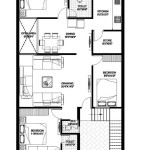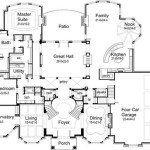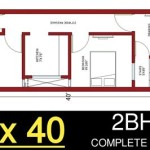Floor Plan For A House
A floor plan is a technical drawing that shows the layout of a house, including the arrangement of rooms, doors, windows, and other features. It is an essential tool for architects and builders, as it allows them to visualize the space and plan the construction process. Floor plans can also be helpful for homeowners, as they can provide a clear understanding of the layout of their house and help them with remodeling or renovation projects.
There are many different types of floor plans, each with its own unique advantages and disadvantages. Some of the most common types of floor plans include:
- One-story floor plans are simple and efficient, with all of the rooms located on one level. This type of floor plan is often used for small houses, as it is easy to build and maintain.
- Two-story floor plans have two levels, with the bedrooms and bathrooms typically located on the second floor. This type of floor plan is often used for larger houses, as it provides more space and privacy.
- Split-level floor plans have two or more levels that are connected by stairs. This type of floor plan is often used for houses that are built on sloped lots.
- Open floor plans have a large, open space that combines the living room, dining room, and kitchen. This type of floor plan is often used for modern houses, as it creates a more spacious and inviting atmosphere.
When choosing a floor plan, there are a number of factors to consider, including the size of your family, your lifestyle, and your budget. It is also important to consider the climate in your area, as this can affect the design of your house. For example, if you live in a cold climate, you may want to choose a floor plan that has a closed-off entryway to keep the cold air out.
Once you have chosen a floor plan, you can begin to customize it to meet your specific needs. You can add or remove rooms, change the size of the rooms, and add features such as a fireplace or a sunroom. You can also work with an architect to create a custom floor plan that is tailored to your unique lifestyle.
Floor plans are an essential tool for planning and building a house. By understanding the different types of floor plans and the factors to consider when choosing a floor plan, you can make sure that your house is designed to meet your specific needs.
Tips for Choosing a Floor Plan
- Consider your family's needs. How many bedrooms and bathrooms do you need? Do you need a separate dining room or can you eat in the kitchen?
- Think about your lifestyle. Do you entertain often? Do you need a lot of space for storage? Do you have pets?
- Set a budget. How much can you afford to spend on your new house? This will help you narrow down your choices and focus on floor plans that are within your price range.
- Research different floor plans. Look at magazines, online resources, and talk to friends and family to get ideas for different floor plans. This will help you visualize the space and get a better sense of what you want.
- Work with an architect. An architect can help you create a custom floor plan that is tailored to your specific needs. This is a great option if you have a unique lifestyle or if you want to make sure that your house is designed to your exact specifications.
Choosing a floor plan is a big decision, but it is also an exciting one. By taking the time to consider your needs and do your research, you can find the perfect floor plan for your new home.

House Plans How To Design Your Home Plan

House Plans How To Design Your Home Plan

Small House Plan Ideas For Diffe Area To See More Read It Floor Plans Kitchen

Floor Plans Types Symbols Examples

Top Tips For Choosing A Floor Plan Your New Home

Simple 2 Y House Design With Floor Plan 32 X40 4 Bed Plans

Living Options Webster House

Peach Tree House Plan Ranch Floor Designs

The Basic Floor Plan Of A Modern Dwelling Scientific Diagram

What Is Used To Draw House Plans Cedreo








